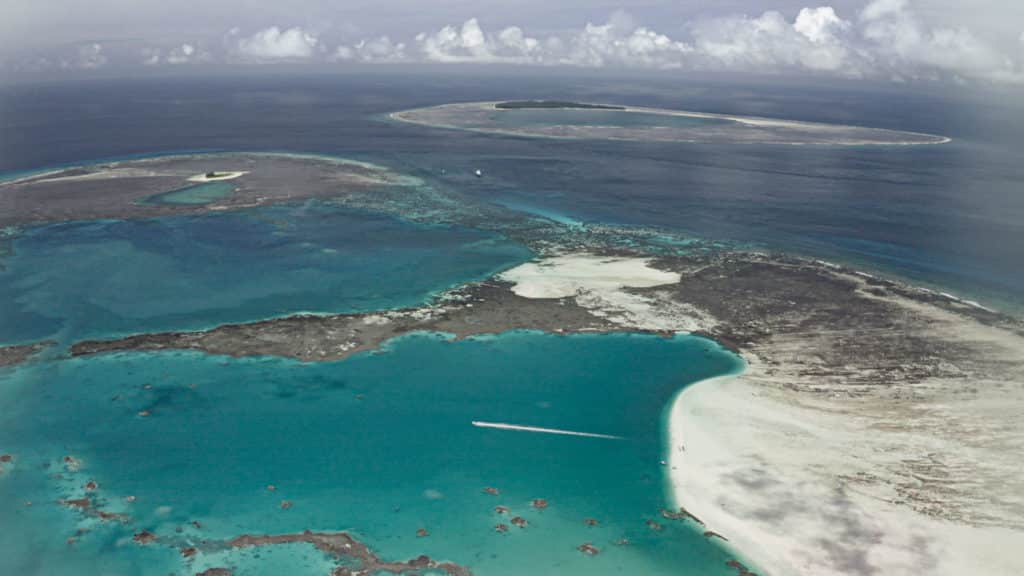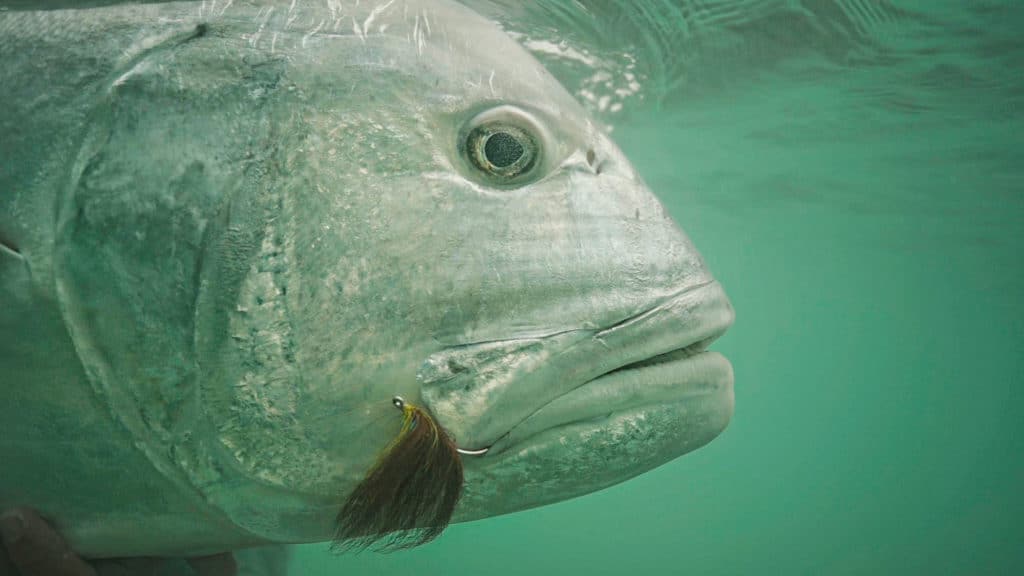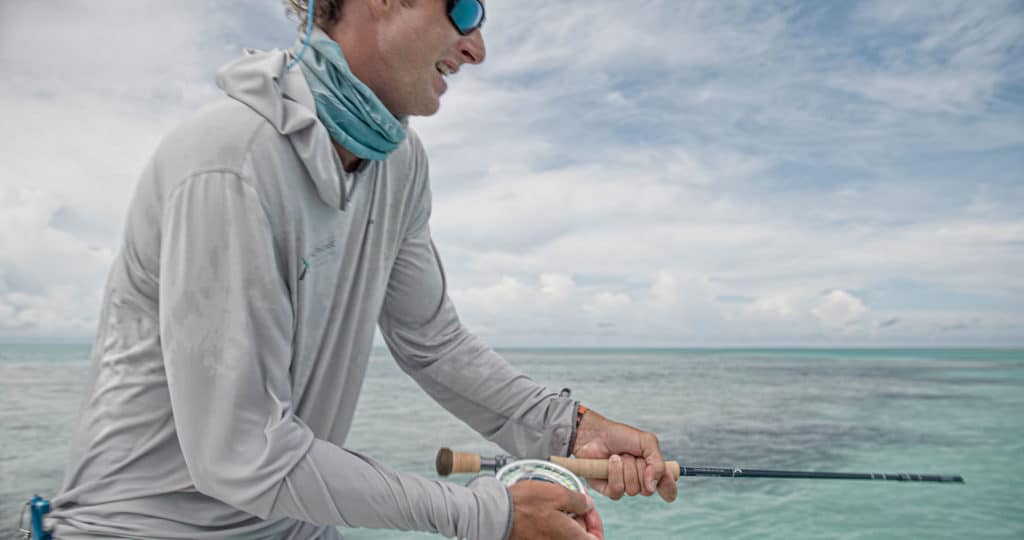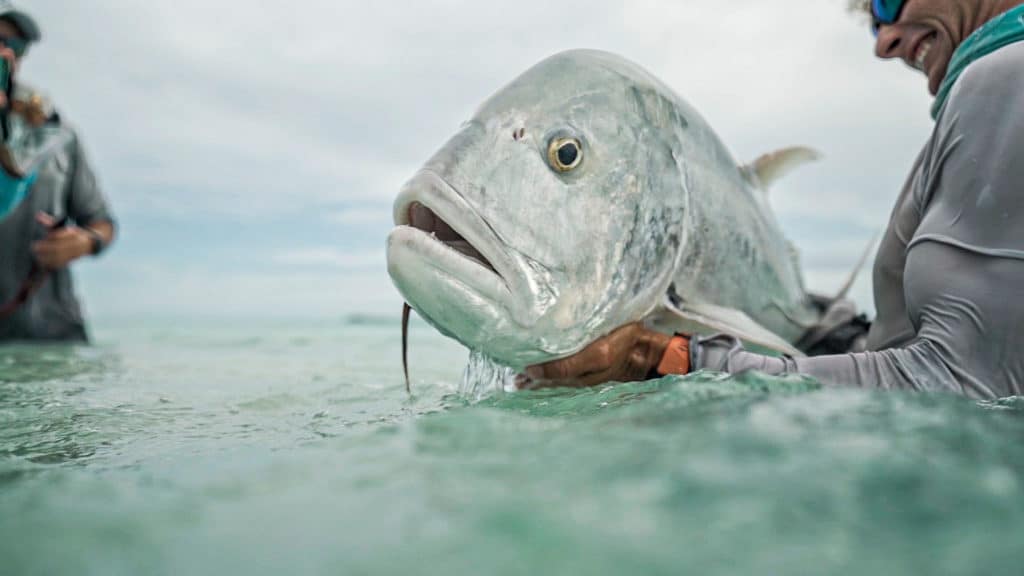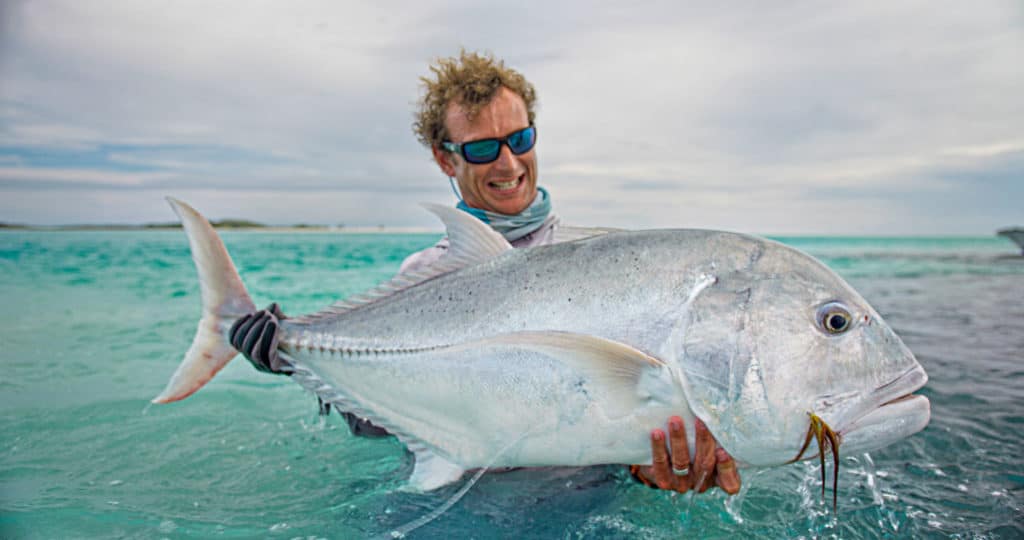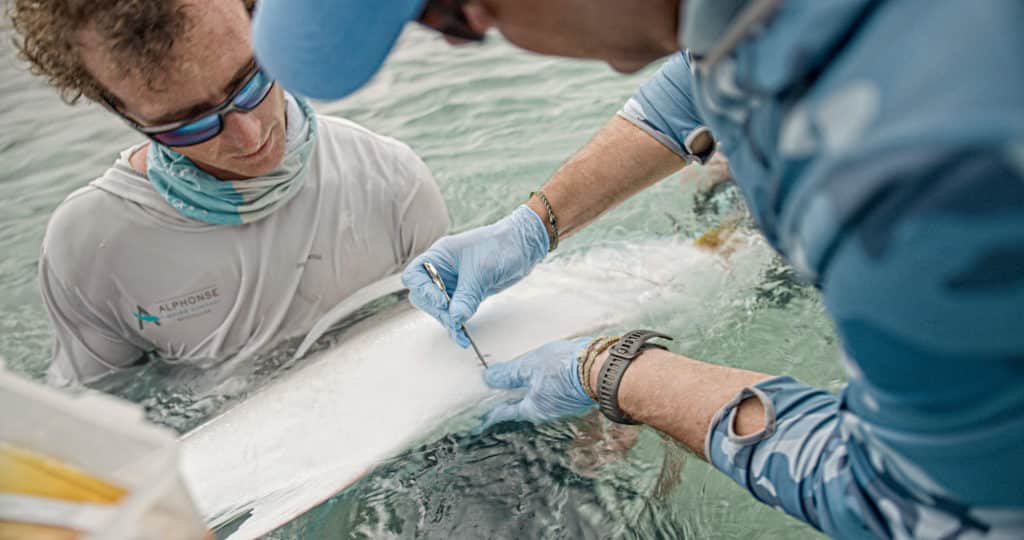The Republic of Seychelles comprises 115 islands 900 miles off the east coast of Africa, 1,800 miles northeast of Madagascar. The Seychelles is world renowned for its saltwater fly fishing, and there’s no better place to experience it than Alphonse Island, a five-star fishing lodge in the outer islands.
Read Next: A Flats Fishing Calendar
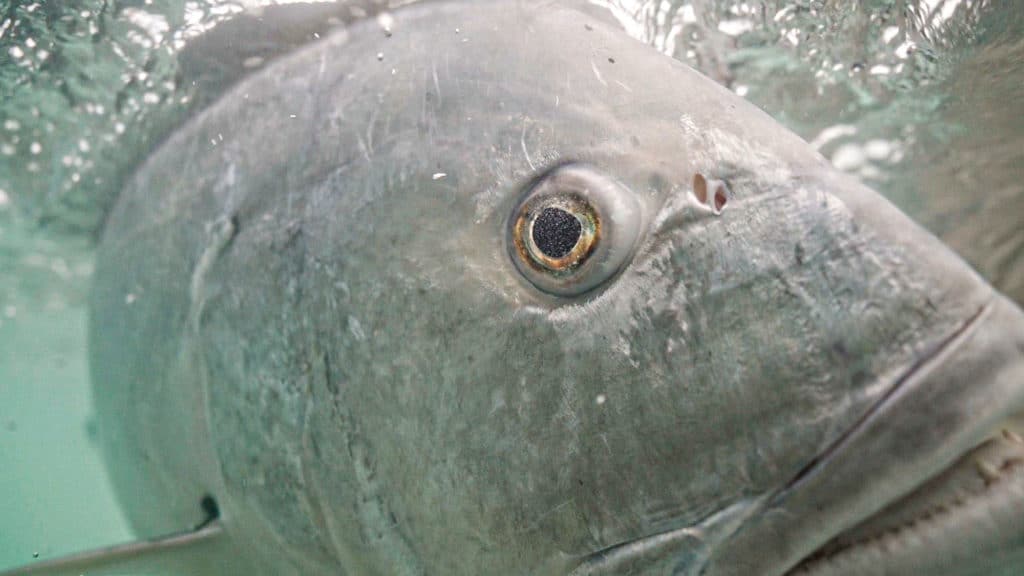
To better protect and sustain this extraordinary fishery, Alphonse Island has launched a research project to tag and track giant trevally. As the apex predator of the flats, a healthy GT population is essential to a healthy ecosystem. Earlier this year, Sport Fishing Television was invited to document the latest tagging effort.
Advertisement
